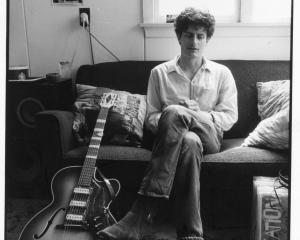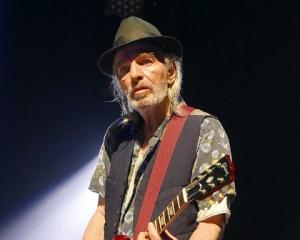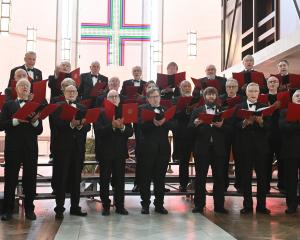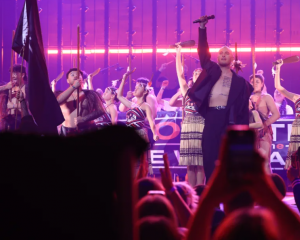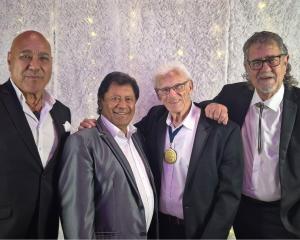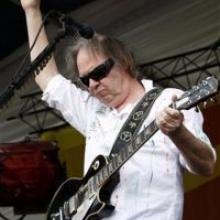
Neil Young has spent the better part of a half-century as one of rock music's quintessential iconoclasts, a living, breathing, thinking, hard-rocking paradox.
On any given night in concert he can be the archetypal folk singer-songwriter, strumming an acoustic guitar while singing artfully poetic lyrics that course through the most delicate recesses of the human heart; on another, he'll happily make eardrums bleed with foot-stomping, ribcage- and sabre-rattling electrified rock.
The composer of eloquent tracts lionising the beauty of the natural world or lamenting the corruption of the Native American way of life by Old World invaders can turn around and wax rhapsodically about the 20th-century invention that arguably plundered the environment more than any other: the car.
The mercurial artist who has appeared to flit from one creative impulse to the next - most famously during the '80s, ricocheting from electronic rock to rockabilly to country to blues and back to classic rock - also spent much of two decades methodically fashioning a ground-breaking way for fans to explore his life's work.
That would be the long-delayed career retrospective set for release this week, Neil Young Archives: Volume 1, 1963-1972.
This inaugural instalment spans his first recordings with his high school band, the Squires, in Winnipeg, Manitoba, to his tenure in Los Angeles with the short-lived but widely influential Buffalo Springfield.
It continues through his initial collaborations with Crazy Horse and Crosby, Stills, Nash & Young, and his first solo recordings, including his 1972 commercial breakthrough, Harvest.
The set is massive - and just the first of what Young envisions ultimately as four or five volumes.
Reprise Records, his long-time label, is putting it out in the United States in three formats, encompassing 10 discs on Blu-ray or DVD, or as an eight-CD set. (Just the eight-CD set is scheduled for New Zealand release at this stage.)But don't get him started about the MP3 version.
"Apple has made music into wallpaper, so what can I tell you?" Young (63) said recently, sitting on a couch in the Santa Monica office of his long-time manager, Elliot Roberts.
"As a matter of fact, there's a thing that comes in the box where you can have this whole set on MP3 for nothing," he continued, adding derisively: "It's worth it."Young's mission extends beyond just an exhaustive documentation of his own music, imposing as that task alone would be for the artist, who even in his teens was socking away memorabilia from garage bands and mailing letters to himself containing his song lyrics and chord progressions to establish copyright protection.
He has come up with a way to redefine the way digital information is organised and retrieved in a manner that is likely to have widespread impact in the music community and beyond.
His lifelong proclivity for collecting and organising has yielded "The Shakey Platform," named for his cinematic pseudonym, Bernard Shakey.
It accommodates not just boatloads of music - 128 tracks in the first volume, nearly half of them previously unreleased songs, alternate takes or different mixes - but also reams of photos, press clippings, lyrics, audio and video interview clips and mini-films he's made over the decades.
In short, Young has cranked the boxed set to 11.
"I'm very jacked up about this," Young said, dressed typically casual in a black T-shirt and faded blue jeans.
His sideburns might be greying at the edges, but his hazel eyes sparkle with devilish joy as he fiddles with the black game controller of the Sony PlayStation 3 unit he's using to navigate one of the discs.
That's his preferred machine for the Blu-ray set, the version he's most enthusiastic about because of the advanced interactivity - users can listen to music while exploring the other features - and superior audio and video quality.
It's also the priciest.
"You can click around on the photo gallery," he noted, stopping to point out a shot of his kindergarten class that shows, among other things, his penchant for plaid shirts was already in place at age 5.
"That's me in the top row."
Moving on, he's an entertaining tour guide: "There, she was my early girlfriend ... That's my dad ... It kind of just gives a background."
It's like leafing through a family scrapbook - and there is a classy 238-page book with the Blu-ray and DVD sets that gathers a lot of the material in tangible form - albeit one with a soundtrack of some of the most distinctive, emotionally daring music of the rock era.
It's a dense, richly illuminating package that traces with great fluidity the arc of Young's growth from starry-eyed kid to bona fide rock star and esteemed songwriter within a few years.
Bob Dylan has been trolling his catalogue in recent years with the Bootleg series of releases, and the Beatles are due for a major revisit with the arrival in September of the group's remastered original recordings and the appearance of the The Beatles Rock Band video game.
But Young's project sets the bar at a level even the keepers of the Fab Four's legacy will be challenged to match.
According to Young, since the 1983 introduction of the compact disc, music has been greatly diminished, a sorry trend that's just accelerated with the invention of the iPod and MP3s.
Compared with 12-inch LPs, CDs offer drastically reduced art, graphics and text for fans to explore.
A CD track typically contains about 10 times more digital information, yielding more accurate and detailed sound, than an MP3; the Blu-ray disc offers 50 to 60 times as much as the MP3.
"There's less to hear," he said of MP3s, "technically less to hear."
It's a sonic short-shrift that Young believes is directly tied in with the music industry's economic woes.
"Hopefully," he said, "this set will be the beginning of an understanding of what's been lost along the way with our technological advances."
To some extent, Young's need to deliver something exceptional became more urgent after he successfully underwent surgery four years ago to treat a brain aneurysm.
"There's no way to for me to say how that affected me," said the rocker who famously sang: "It's better to burn out than to fade away."
"I just know that everything I'm trying to do needs to be set up so it can be done by me or somebody else. You just look at it that way."
The Archives project was well under way when that occurred, but "it certainly added a lot of energy to all the other projects we were working on," said L. A. Johnson, Archives producer and an associate of Young for nearly 40 years.
"He's determined to get everything else done too. All our in-boxes got a lot bigger after that."
Young's Linc/Volt project, with an accompanying film documenting his conversion of a 1959 petrol-devouring Lincoln Continental into a 160km-per-gallon electric vehicle of the future, is a big one, even though ecological sensitivity is hardly new territory for the musician.
He's also long championed community-based social action, notably with his annual concerts benefiting the Bridge School in Hillsborough, California, which his wife, Pegi, co-founded to serve children with severe speech and physical impairments.
Now that he and his Archives team have come up with the Shakey Platform, he plans to release all his future individual albums in this format.
He believes it will be useful on many other fronts too.
"This whole thing on the platform area is what we're [focusing on] next, so we can offer this technology to other artists and other companies next year," he said a few days before heading to Europe for another round of concerts.
"Not only could this be used for a great Dylan retrospective, or Sinatra or Cab Calloway, but for the history of recorded sound or the history of the Civil War or all the presidents of the United States, as an educational tool.
"You can take a historical [subject], whether it covers a space of 80 minutes or 800 years, and put it on this thing and organise it and use as many discs as you want, or whatever technology you need to store it ultimately," he said.
"But you'd have the access to all of the events in a chronologically evolved timeline [that] you can magnify, zoom in on and grab more and more detail as you go in, moving through time, capturing all the media that's associated with the events ... and background on people involved in the events - put it into a succinct machine that allows you to get it out of the machine and the speakers."

